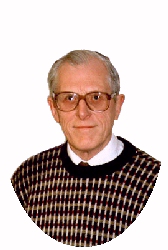
Black Rock Desert is at 4000ft altitude with an atmospheric pressure about 15% lower than at sea level. As both engine thrust and aerodynamic drag are related to pressure, you might think that their effects would balance out, and vehicle performance would be little affected by altitude. However, there are two other terms in the performance equation, namely rolling resistance and vehicle mass, which are not affected by altitude. In consequence, the rate of acceleration and the maximum speed of ThrustSSC will be less on a high altitude site.
Even if we find a sea-level site, we would have to be cautious before using it, as the increased pressure also causes increased structural loads on the car, and increased fuel consumption.
The ambient temperature we expect at Black Rock Desert in September/October is in the range of 5°C to 25°C. In other words, the sort of temperatures we are accustomed to in the UK. There are two temperature effects that are important to us. These are engine performance and speed of sound.
First, engine performance. As a generalisation, all engines give better performance in low-temperature conditions. Our Spey engines are no exception.
The speed of sound depends purely on temperature. (Note: it is not dependent on pressure, despite a commonly held conviction to the contrary. The misunderstanding is caused by the observation that speed of sound reduces with altitude, but this (as stated above) is a temperature effect and not a pressure effect.) To be precise, the speed of sound is proportional to the square root of the absolute temperature.
Clearly it makes good sense to attempt our supersonic runs at low temperature, because we get the double benefit of increased engine thrust and minimum speed of sound. Thus we will carry out our supersonic runs soon after first light when the temperature is at a minimum, there will be least atmospheric turbulence and (hopefully) less people around which will simplify the safety problems.
The cumulative effect of these early starts, seven days per week, on the ThrustSSC team is something I would rather not think about!
Humidity does not have a first-order influence on engine or car performance. In any case, on our desert sites the atmosphere is likely to be very dry.
When running Thrust 2, Richard Noble did sometimes encounter humid conditions. The resulting condensation enabled him to ‘see’ the shockwaves over the wheel arches.
Our ideal site would be at sea level and at low temperature. A black mark to anyone who suggests we run the car on a frozen lake in the Arctic. I have just bought my tropical kit.
 |
 |
 |
||
| Sponsored by | This site best viewed with Microsoft Internet Explorer 3 | |||